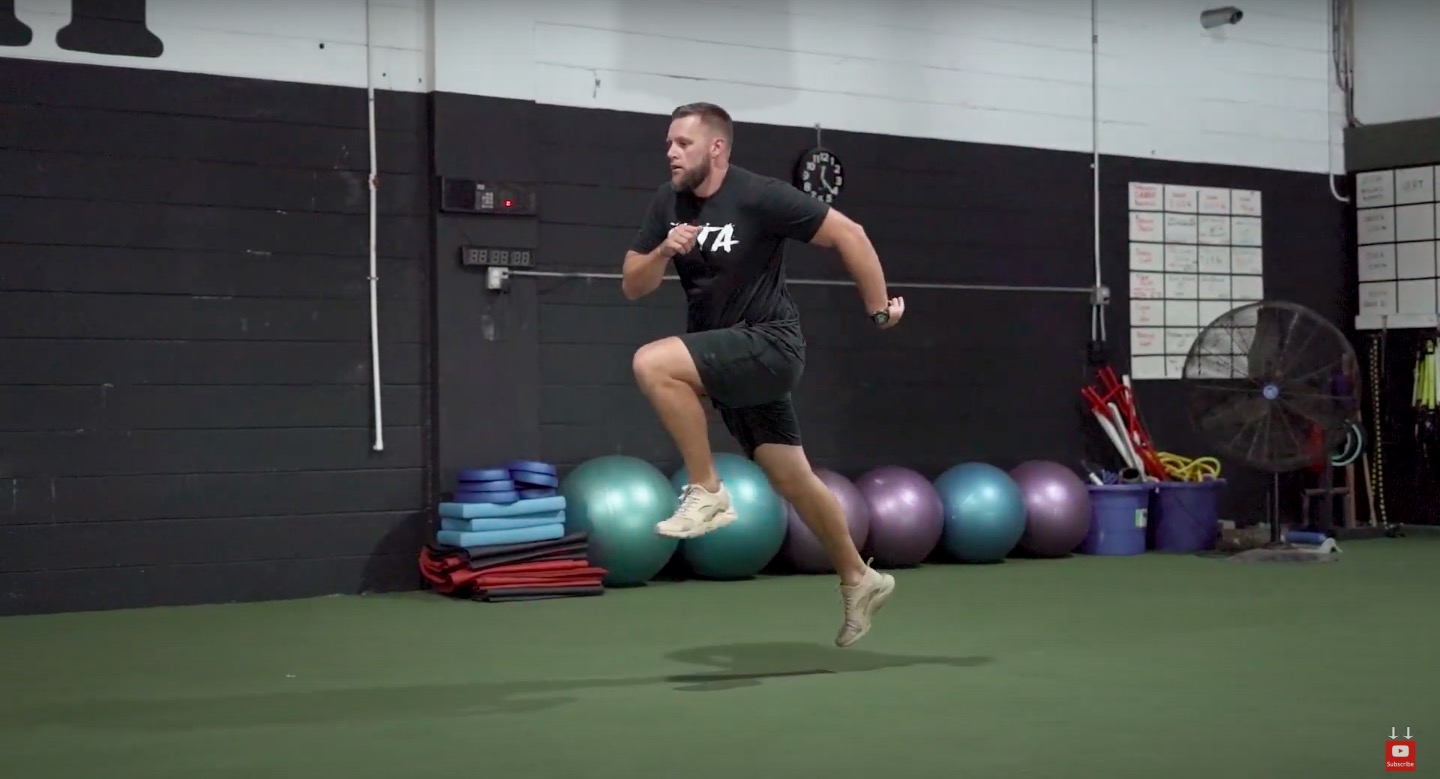Oftentimes we think of agility training as unnecessary time spent running through agility ladders and hopping around the gym… however, I’m here to tell you that agility is one of the most important qualities an athlete can possess and bring to the table when training for their sport. Today I want to share 3 of my favorite supplemental strength exercises or auxiliary drills to improve your change of direction (COD) agility training.
What’s Agility Training For?
Agility is your overall ability to change direction with speed and accuracy. The more we practice this in the gym, the faster we can perform it out on the field. That’s why I’m consistently pushing my athletes to work through variations of drills that enhance their multi-directional speed.
3 Drills For Your Next Agility Training Session
1. Rebound Lunges

Forward rebound and lateral rebound lunges mimic the athlete’s ability to decelerate while sprinting forward. Deceleration is key on the field so that you can make a quick change of direction – juking left or right from a straight line. The lateral component specifically, brings the feet directly below the hip as it would in a quick change of direction. Both work to absorb and produce force in the frontal plane.
HOW TO: Starting with a kettlebell at your chest, take a step forward into a lunge. The moment your foot touches the floor – rebound directly back up to standing. The same applies to your lateral lunge: think quick and powerful.
2. Eccentric Resisted Sled Drag

This is a low seated back pedal – the position forces you to move slowly and eccentrically through knee extension, which directly translates to their ability to decelerate linearly and from there, make moves in any direction.
HOW TO: Begin with the handles of your sled in-hand, then drop the hips to a low seated position. From here you’re going to backpedal, pulling the weight with you. Be sure to keep the glutes and core engaged the entire time, maintaining a strong hinge position and straight spine. With each step, fight the urge to swivel, keeping your chest facing towards the sled at all times.
3. Crossover Sled Drag

This final drill is also in the frontal plane, testing the athletes ability to increase the mobility of the ankle (eversion and inversion threshold), but also through abduction and adduction of the hips.
HOW TO: Begin with the handles of the sled in your right hand with tension on the straps or chains. From here, pick up the right leg and cross in front to step over the left. Again you want to keep the spine tall and the core tight – there can be a slight lean to accommodate for the resistance but think of driving and pulling with each step.
Develop GAME SPEED AGILITY

Over my many years training top notch athletes, I’ve had the time to see what works and what doesn’t work.
When it comes to something as important as agility training, that becomes even more important. There’s tons of guys out there doing the wrong drills… remember running through agility ladders? Here’s why they’re a waste of time… If you’re ready to switch up your training to develop a better 40yd dash speed, quicker change of direction and more power behind your sprinting.
Look no further than my best-selling, 14 week program Game Speed Agility. I’ve boiled agility training down to 3 simple steps:
- Mechanics
- Force Management
- Cognitive Conditioning
I’ll guide you through each phase of training to build sport-specific, game-time speed so you can avoid more tackles, lockdown on defense, play as a better fielder or any other sport application.
